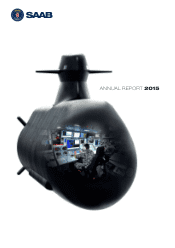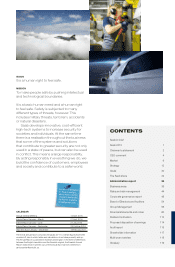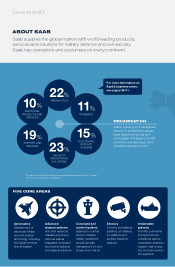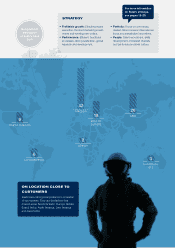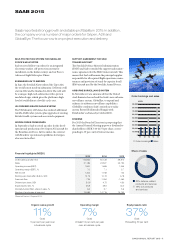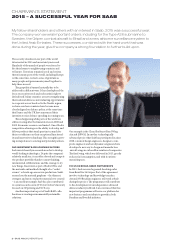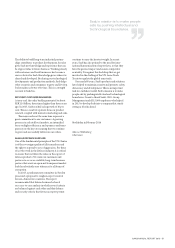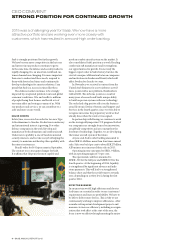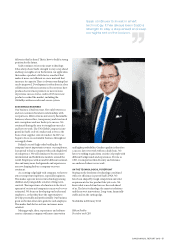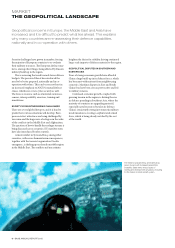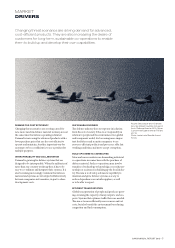Saab 2015 Annual Report Download - page 11
Download and view the complete annual report
Please find page 11 of the 2015 Saab annual report below. You can navigate through the pages in the report by either clicking on the pages listed below, or by using the keyword search tool below to find specific information within the annual report.
MARKET
DRIVERS
Changing threat scenarios are driving demand for advanced,
cost-efficient products. They are also increasing the desire of
customers for long-term, sustainable co- operations to enable
them to build up and develop their own capabilities.
DEMAND FOR COST EFFICIENCY
Changing threat scenarios are creating a need for
new, more modern defence materiel in many areas at
the same time that defence spending is limited.
Demand is increasing for advanced products with a
lower purchase price that are also cost ecient to
operate and maintain. Another important way for
customers to be cost ecient is to use a product for
multiple purposes.
INTEROPERABILITY AND COLLABORATION
Demand is growing for defence systems that are
designed to be interoperable. When the militaries of
more than one country work together, it has to be
easy to co-ordinate and integrate their systems. It is
also becoming increasingly common that defence
materiel and systems are developed collaboratively
between companies and countries, in part to share
development costs.
SUSTAINABLE BUSINESS
e defence industry does not operate in isolation
from the rest of society. It has to act responsibly in
relation to people and the environment. In a global
and transparent world, it is becoming more impor-
tant for defence and security companies to use
resource-ecient products and processes, oer fair
working conditions and never accept corruption.
BUILD UP DOMESTIC CAPABILITIES
More and more countries are demanding industrial
co-operations in connection with the purchase of
defence materiel. Such co-operations may involve
transfers of technology or knowledge, research part-
nerships or assistance in building up the local indus-
try. e aim is to develop a domestic capability to
maintain and grow defence systems as a way to
reduce dependence on outside suppliers, as well
as to be able to export.
EFFICIENT TRANSPORTATION
Global transportation of people and goods are grow-
ing, straining the capacity of many airports and sea-
ports. Systems that optimise trac ows are needed.
e aim is to more eciently use resources and cut
costs, but also benet the environment by reducing
congestion and fuel consumption.
Around 3,600 people and 115 aircraft
from nine different countries took part in
Arctic Challenge Exercise 2015. Gripen
is shown here together with an F18 and
an F16.
Photo: Louise Levin/Swedish Armed
Forces.
SAAB ANNUAL REPORT 2015 – 7

